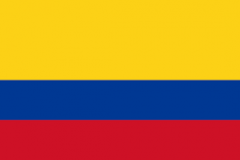The countries of Latin America commemorated International Labor Day on May 1 with restrictions due to the coronavirus pandemic but with firm claims of a speedy economic recovery. Colombia again witnessed demonstrations but, unlike the previous three days of protests against the tax reform proposed by the government, they took place calmly and without major incident on May Day in different cities, where better labor conditions were demanded. Hundreds of Honduran workers marched to demand that the government promote “mass vaccination” against COVID-19 and other measures to mitigate the crises caused by the pandemic. Since the outbreak of the pandemic in Latin America in March 2020, the region has lowered its gross domestic product to 2010 levels, according to the Economic Commission for Latin America and the Caribbean. In addition, 57 percent of employment is precarious and poverty has returned to the levels of 15 years ago, according to the secretary general of the Organization of Ibero-American States (OEI) for Education, Science and Culture, Mariano Jabonero, in a recent interview with EFE.
- Home
- About Us
- Issues
- Countries
- Rapid Response Network
- Young Adults
- Get Involved
- Calendar
- Donate
- Blog

